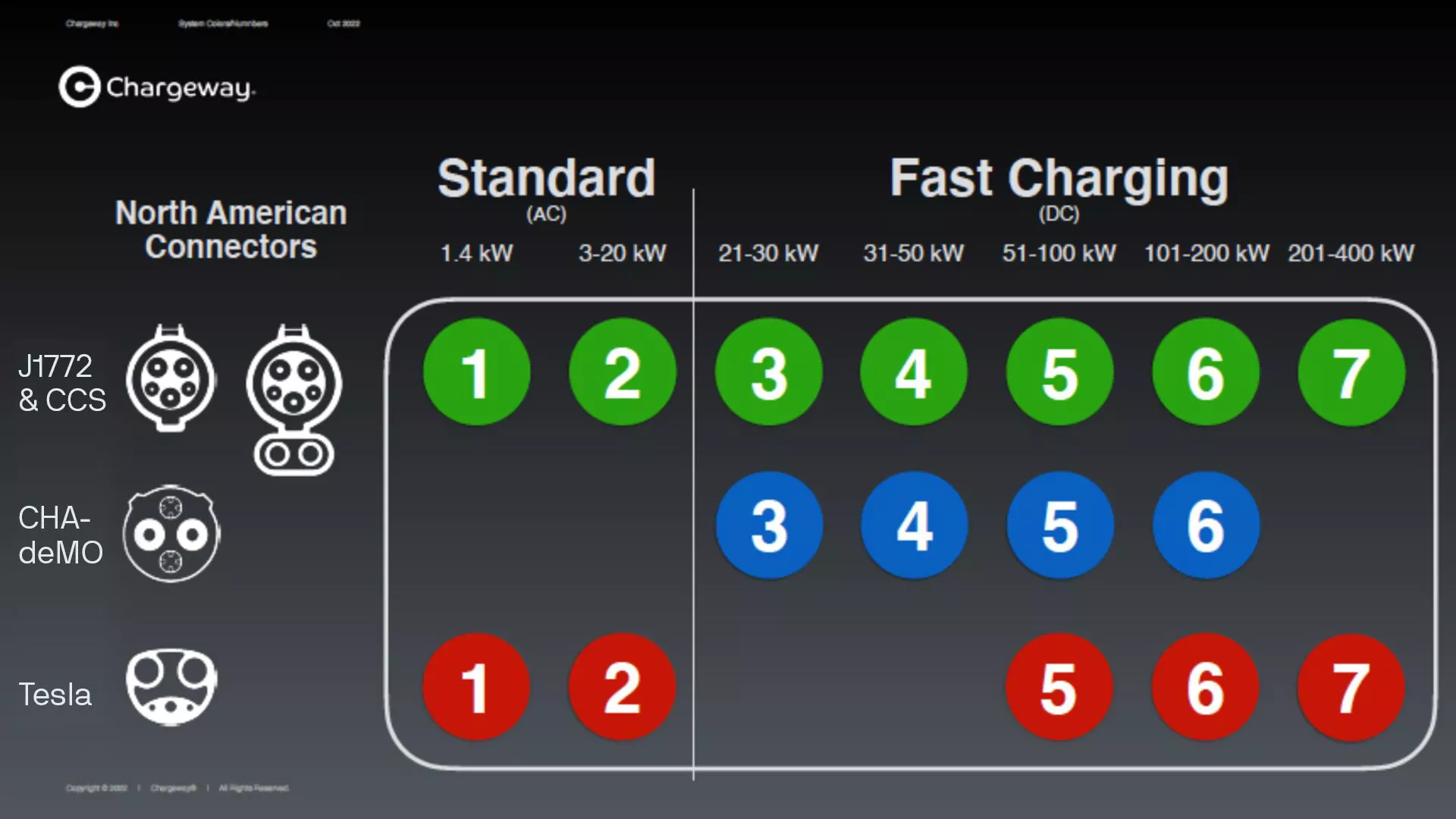Chargeway is Demystifying Electric Car Charging

The latest news from Axios shines a light on the complexities of EV charging and how Chargeway is leading the way on how this can all be simplified for every driver, everywhere. We’ve included the article, below, in case it disappears:
Drivers typically know whether their car takes “regular” or “premium” gasoline. But when their fuel is electricity, filling up can be downright confounding.
Driving the news: A new startup aims to fix that via a color- and number-coded system that helps electric vehicle (EV) drivers find the best chargers and plugs for their particular car.
Why it matters: Helping car buyers understand how charging works — and managing their expectations — is one of the biggest hurdles facing the EV movement.
- EV consumer anxiety isn’t just about finding chargers. They also need to know which chargers work with their vehicle, how long it will take to “fill up” and how to pay.
- One problem: different cars require different connectors. A Nissan Leaf or Mitsubishi Outlander can use one type of plug, while most other EVs use a different connector — except for Teslas, which use a third, proprietary connector.
Also important to know: Home chargers and many of those often found at parking garages, grocery stores, malls and hotels are much slower than “DC fast chargers.”
- Yet some fast chargers are quicker than others, with outputs ranging from 24 kW to 350 kW.
- It might seem intuitive to seek chargers with the highest output, but many cars are limited in how much power they can accept.
For example: Ford’s F-150 Lightning and Hyundai’s Ioniq 5 can both be plugged into a 350 kW DC fast charger. But the Ford only accepts up to 120 kW or 155 kW, depending on the truck’s battery size.
- In the nebulous world of EV charging etiquette, that pickup driver would be seen as a “charger hog” if they plugged into a 350 kW charger (because they would fill up just as quickly at a less powerful charger).
One more thing: Just as a gas pump slows to a trickle when the tank is almost full to avoid overflowing, EV chargers slow dramatically when the battery reaches 80% capacity.
- You can still top off your battery, but that could add 30 minutes or so to your “fast” charging session — a surprise to many first-timers.
What’s needed: A massive education effort.
- “It’s a big shift,” acknowledges Jonathan Levy, chief commercial officer at charging provider EVgo. “Americans don’t speak kilowatts or kilowatt-hours in their home, even though their monthly electricity bill says, ‘here is how many kilowatt-hours you consumed.'”
- “And it’s partially our responsibility as an industry to teach the units.”
Yes, but: The average driver doesn’t want to learn a new language just to refuel their car, says Matt Teske, founder and CEO of Chargeway, a startup aiming to dramatically simplify EV charging.
How it works: Chargeway’s app uses colors to show your car’s plug type and numbers to show the maximum power level it can accept:

Chargeway’s app also includes a map showing the types of plugs and power levels offered at each charging site.
- A timer feature helps users estimate how long they’ll need to recharge.
- And if you plan a road trip, Chargeway will calculate where you should charge, based in part on factors like the weather and your typical driving habits.
What to watch: Teske hopes to create a universal language for charging and reports positive responses so far from government officials, carmakers and industry groups.
Article by Joann Muller; originally published on Axios.
